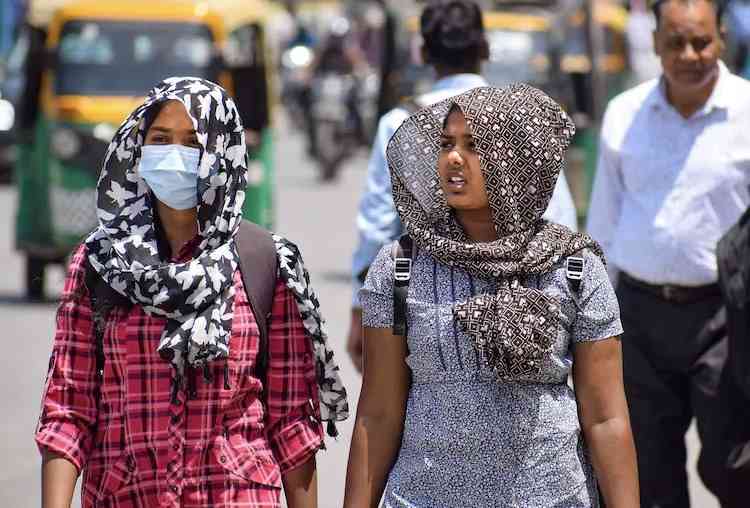Rising Temperatures: Health Department Issues Important Heat Advisory

Table of Contents
Understanding the Dangers of Extreme Heat
Extreme heat poses significant risks to public health. Understanding heat-related illnesses and identifying vulnerable populations is the first step in protecting yourself and others.
Heat-Related Illnesses
Heat exhaustion, heat stroke, and heat cramps are all serious conditions resulting from prolonged exposure to high temperatures. Recognizing the symptoms is vital for timely intervention.
- Heat exhaustion symptoms: Heavy sweating, weakness, dizziness, headache, nausea, vomiting, muscle cramps. While serious, heat exhaustion is usually treatable if addressed promptly.
- Heat stroke symptoms: High body temperature (above 103°F or 39.4°C), confusion, seizures, loss of consciousness, rapid pulse, and flushed skin. Heat stroke is a life-threatening medical emergency requiring immediate medical attention. Dial emergency services immediately if you suspect heat stroke.
- Heat cramps symptoms: Muscle pains and spasms, usually in the legs and abdomen, often occurring during strenuous activity in hot weather.
Vulnerable Populations
Certain groups are more susceptible to the negative effects of extreme heat and require extra precautions.
- Elderly individuals: Older adults often have decreased thermoregulation, making them more vulnerable to heat-related illnesses. Regular check-ins on elderly neighbors and family members are crucial during a heat advisory.
- Infants and young children: Their bodies haven't fully developed the ability to regulate temperature effectively. Never leave children unattended in vehicles, even for short periods, during hot weather.
- Individuals with chronic illnesses: People with heart disease, diabetes, respiratory conditions, or other chronic illnesses are at increased risk of complications from extreme heat. They should take extra care to stay cool and hydrated.
- People working outdoors: Those working in physically demanding jobs outdoors are especially susceptible. Employers must implement adequate safety measures to protect their employees.
Protecting Yourself from the Heat
Taking proactive steps to stay cool and hydrated is essential during a heat advisory. Simple changes in behavior can significantly reduce your risk of heat-related illnesses.
Staying Hydrated
Hydration is paramount during hot weather. Drinking plenty of fluids is critical for maintaining your body's temperature.
- Drink water regularly, even before you feel thirsty. Don't wait until you're dehydrated to start drinking.
- Avoid alcohol and sugary drinks, as they can dehydrate you further. Electrolyte drinks can be beneficial after strenuous activity, but water is your best bet for regular hydration.
- Carry a reusable water bottle and refill it throughout the day.
Seeking Shade and Cool Environments
Limiting sun exposure during peak heat hours is vital.
- Limit outdoor activities during the hottest part of the day (typically 10 a.m. to 4 p.m.). Schedule outdoor tasks for the cooler morning or evening hours.
- Spend time in air-conditioned buildings like libraries, shopping malls, community centers, or movie theaters.
- Utilize fans strategically to improve air circulation, especially at night.
Dressing Appropriately
Choosing the right clothing can make a difference in staying cool.
- Wear loose-fitting, light-colored clothing. Light colors reflect sunlight, while loose clothing allows for better air circulation.
- Wear a wide-brimmed hat to protect your face and neck from the sun.
- Consider using sunscreen with a high SPF to protect your skin from sunburn.
Recognizing and Responding to Heat-Related Illnesses
Knowing how to recognize and respond to heat-related illnesses can save lives.
First Aid for Heat Exhaustion
If someone shows signs of heat exhaustion, take these steps:
- Move the person to a cool place, preferably with air conditioning.
- Give them fluids (water or electrolyte drinks) to help rehydrate them. Avoid sugary drinks.
- Loosen their clothing to allow for better air circulation.
- Apply cool, wet cloths to their skin, especially the neck, wrists, and ankles.
When to Seek Medical Attention
Heat stroke is a medical emergency. Call emergency services immediately if someone shows signs of heat stroke.
- Heat stroke is a life-threatening condition that requires immediate medical attention. Early intervention is critical. Do not delay seeking medical help.
Conclusion
This Heat Advisory underscores the critical importance of taking precautions during periods of rising temperatures. Understanding the dangers of extreme heat, employing preventative measures, and knowing how to respond to heat-related illnesses are essential for safeguarding your health and well-being. Remember to stay informed about the forecast and heed the advice in this Heat Advisory. Stay safe and take proactive steps to beat the heat this summer. Pay close attention to weather updates and remain vigilant during this prolonged period under this Heat Advisory. Check for updated heat advisories regularly from your local health department.

Featured Posts
-
 Uk Wildfires Rare Wildlife Torched Pushed To Extinction
May 13, 2025
Uk Wildfires Rare Wildlife Torched Pushed To Extinction
May 13, 2025 -
 Brexits Impact Spanish Border Towns On The Brink Of Economic Collapse
May 13, 2025
Brexits Impact Spanish Border Towns On The Brink Of Economic Collapse
May 13, 2025 -
 Case Study Addendum Byds Leadership In Electric Vehicle Battery Manufacturing
May 13, 2025
Case Study Addendum Byds Leadership In Electric Vehicle Battery Manufacturing
May 13, 2025 -
 Ostapenko Stuns Swiatek Again Advances To Stuttgart Semifinals
May 13, 2025
Ostapenko Stuns Swiatek Again Advances To Stuttgart Semifinals
May 13, 2025 -
 Myanmar Sanctions Examining The Uk And Australias Strategic Objectives
May 13, 2025
Myanmar Sanctions Examining The Uk And Australias Strategic Objectives
May 13, 2025
